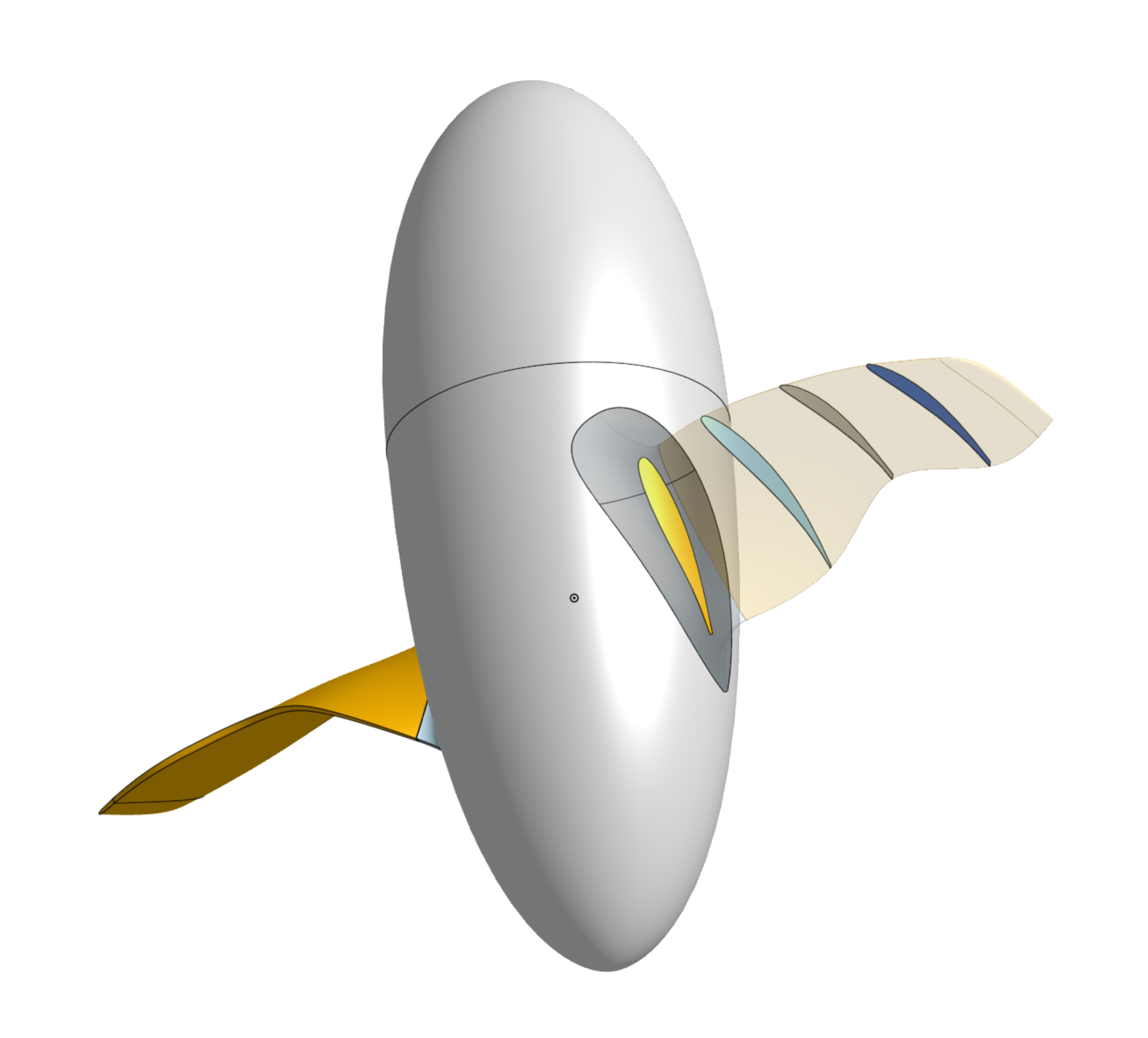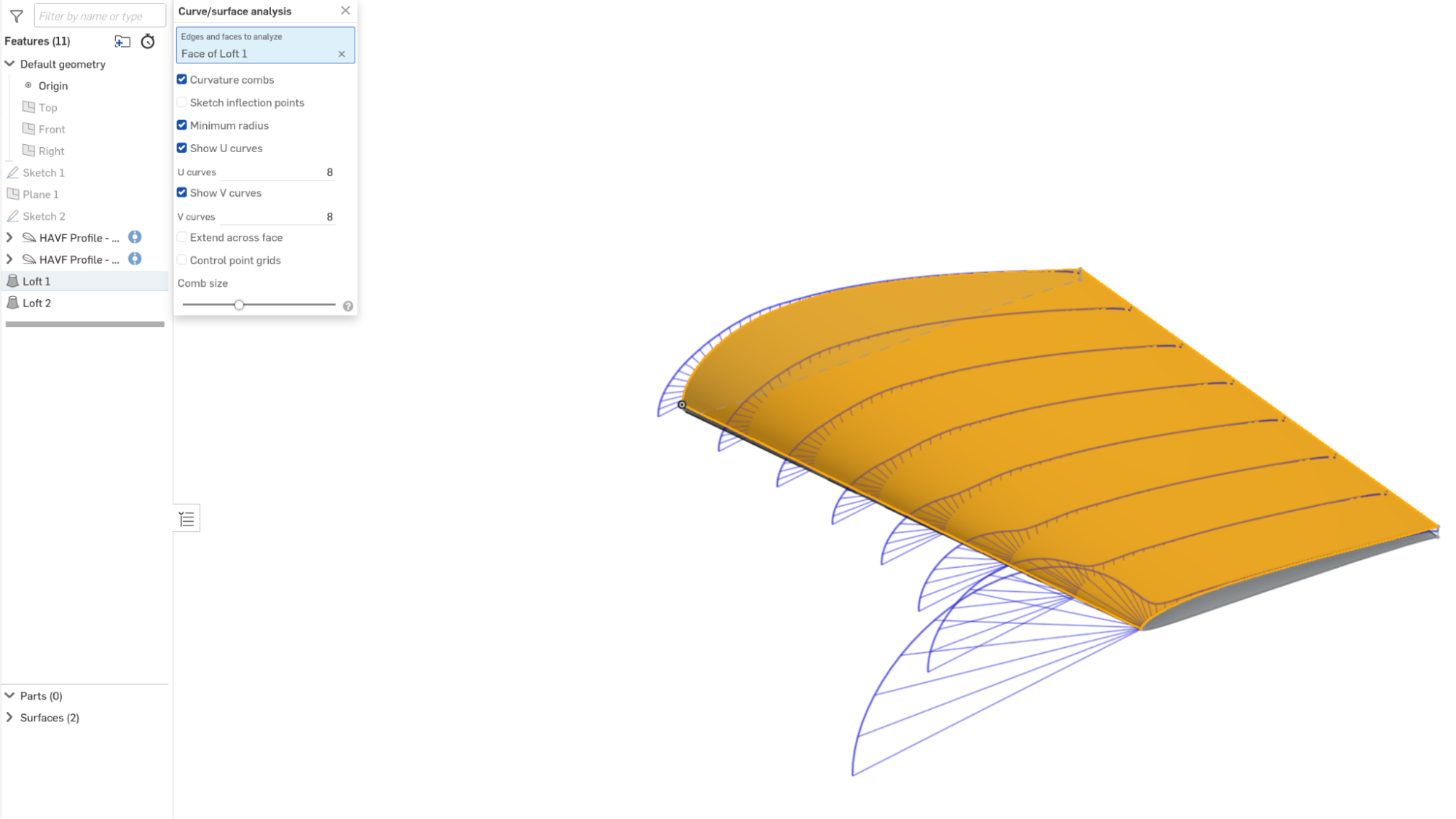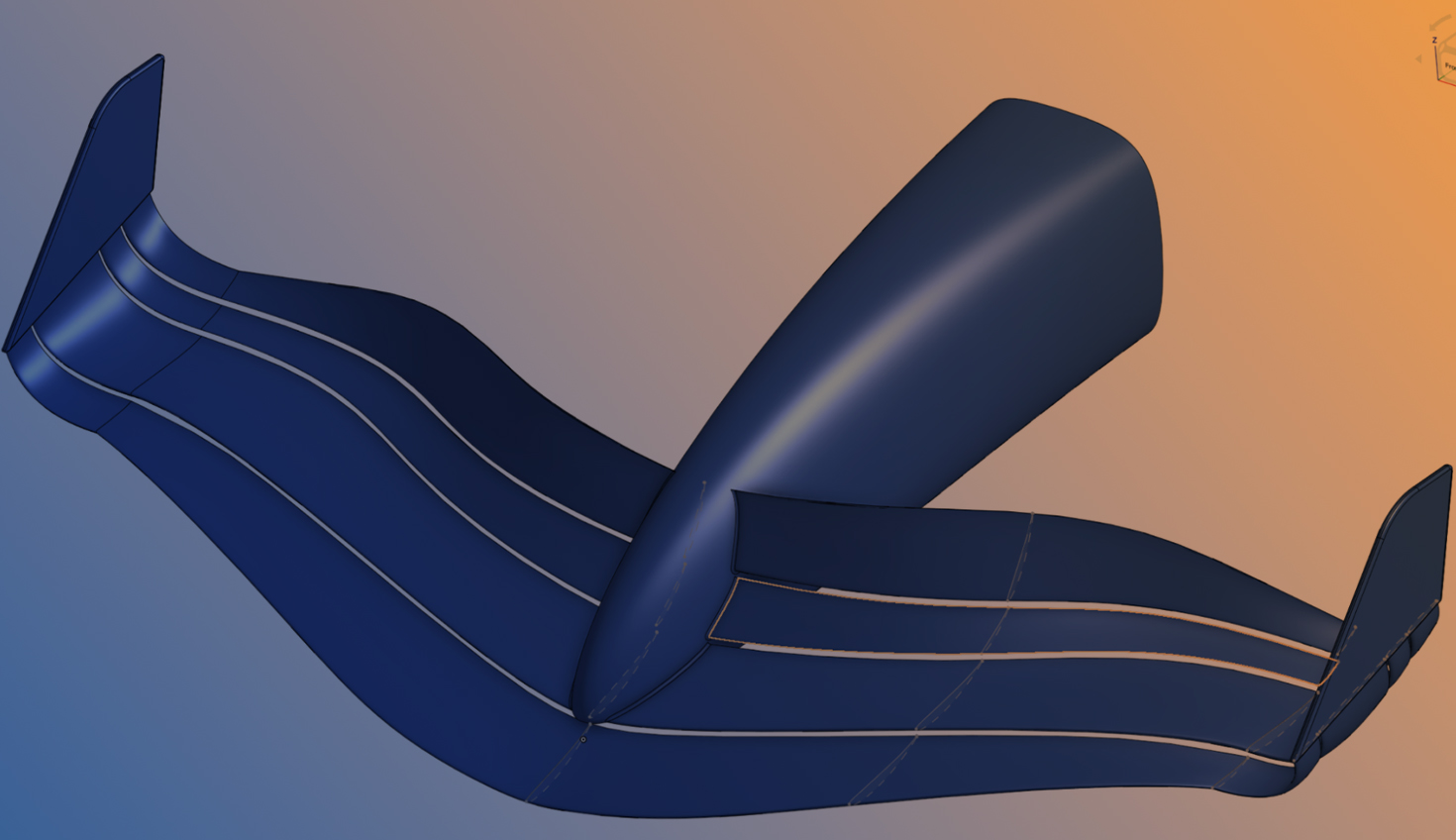Precision surface modeling is a meticulous and time-consuming process in aerospace engineering, especially for airfoil design. Airfoils are scattered all over the web in different formats, with different amounts of coordinates in different draw orders.
Aerospace modelers often struggle to craft a perfect tool that can cleanly import any foil, format, or resolution into their modeling software. However, that approach is dangerous because if you rely on it, it will fail you just when you are relying on it the most. Don’t waste time before a deadline by debugging a 2,000-line custom import tool to fix an obscure error, only to create more errors down the line.
The smarter approach uses a vector-based airfoil format with very low entropy, consistent draw order, and a consistent variable count, reframed for consistent trailing and leading edge locations. In that case, your import tool can be much simpler. Simpler means more reliable.
HAVF Beginnings and an Onshape Collaboration
With that idea in mind, I contacted PTC’s Onshape about some projects using my format. I was pleased to receive an eager response.
Within two days of speaking with Head of Product Greg Brown about my airfoil format, I was surprised to receive an email about a tool that surpassed even my add-ons for other CAD programs.
The idea just worked, and the people at Onshape are no strangers to using FeatureScript (Onshape’s programming language) to deliver purpose-built custom features. The KISS attributes of the HAVF format and the utility of FeatureScript work very well together.

CAD model of a propeller used for YouTube’s RCTestFlight design competition.
What is an Airfoil?
The term “airfoil” is somewhat misleading, as it encompasses a wide range of shapes used in various applications beyond just air. An airfoil is essentially a 2D cross-section of any profile moving through a fluid, whether air or water. These profiles are designed for more than just lift; they can also be optimized for high drag, structural integrity, or volume. Whether for airplane wings, hydrofoils, or wind turbine blades, airfoils – or more broadly, foils – are crucial for performance in any fluid environment.
The Origins of the HAVF Airfoil Format
The HAVF airfoil format was developed to address the complexities of designing high-performance propeller blades. Traditional DAT files, which can require hundreds of input variables, are not ideal for optimization, as altering one coordinate does not affect the others, complicating the creation of smooth, optimized shapes. The solution was to use splines to define airfoils, significantly reducing the data required.
However, a new problem emerged. Optimization algorithms would sometimes converge on well-known airfoils after numerous iterations. The solution was to educate the algorithm, enabling it to recognize and test similar existing airfoils immediately, saving time and improving efficiency.
Speed modeling an F1 Front Wing in Onshape, using implicitly defined chords from freeform spline determined planform.
This approach optimized design processes and accidentally built a great airfoil library, dubbed the Holbrook Aerospace Airfoil Vector Format book. Initially, the book was simply a bit of LaTeX code to turn the data into a readable format for my own use. Over time, I recognized the broader value of this resource and decided to publish it.
The ‘Holbrook Aerospace Airfoil Vector Format’
The HAVF format is the foundation of a comprehensive book offering solutions for approximately 1,600 airfoil shapes. This resource allows engineers and designers to sort through airfoils by thickness, camber, or name, making it invaluable for exploring alternative designs or studying specific families of airfoils. Instead of relying on trial and error or sifting through disorganized datasets, this book enables quick identification of airfoils that might be ideal for your project.
HAVF (Holbrook Airfoil Vector Format) Onshape feature tutorial.
The book is more than just a reference; it’s a practical tool that surpasses common airfoil databases. With a page dedicated to each airfoil, and about everything you’d want to know about that airfoil on the page, it’s a great tool to have. This makes it an essential resource for anyone involved in airfoil, wing, or blade design, from initial concept to final implementation.
The Power of Onshape Custom Features
Onshape’s custom features allow for the creating of bespoke tools tailored to specific design needs. The HAVF Profile custom feature, developed in collaboration with Onshape’s Brown, streamlines airfoil creation and modification.
It offers a sample of the predefined profiles in the “Holbrook Aerospace Airfoil Vector Format” book. Additionally, it allows you to place an airfoil along any line or mate connector, enabling you to define the chord and angle of attack either implicitly or explicitly.
This flexibility allows you to tie an airfoil to a wing planform, adjust the planform, and have the feature rebuild the foil with the correct chord. Alternatively, you can specify the exact chord and angle of attack, anchoring the airfoil to a leading edge to create a wing or blade. Beyond being faster than other import methods, it also offers options for scaling thickness and overwriting the stock trailing edge thickness.
Why HAVF Matters: Consistency, Speed, and Innovation
The HAVF Profile custom feature addresses critical challenges in airfoil design by prioritizing consistency, speed, and innovation.
The HAVF format is so consistent, that you can actually mix the input arrays because they all have the same input length. Something you can’t do with coordinate files because of their varying lengths. Want a mixture between two of the optional 1587 airfoil options? Simply mix their inputs.
 Curvature profiles of two lofted AG32 foils are compared, with the second profile having its thickness factor increased to 3. This demonstrates that the thickness factor affects the curvature of the airfoil, as it only scales the thickness.
Curvature profiles of two lofted AG32 foils are compared, with the second profile having its thickness factor increased to 3. This demonstrates that the thickness factor affects the curvature of the airfoil, as it only scales the thickness. In terms of speed, HAVF is unmatched. No amount of practice can make an engineer match the speed they could achieve with the HAVF system. DAT/Coordinate files will always take longer to import and longer to adjust. Do you need to make a new airfoil? The format is easily explained in the book, and new/custom airfoils can be made by anyone to work with the Onshape tool and work just as well and as fast as solutions from the existing book/library.
Innovation is another cornerstone of HAVF’s value. As the first published book of airfoil vectors capable of accurately describing all existing airfoils, HAVF represents a significant advancement in airfoil design. Its seamless integration with Onshape, supported by FeatureScript, provides an ideal platform for students and professionals to engage in aerospace modeling with ease and efficiency. The enthusiasm from the Onshape community, combined with the platform’s rapid development capabilities, makes HAVF a compelling choice for anyone serious about advancing their aerospace design work.
Future of Airfoil Design
 Glider wing made in Onshape using HAVF profiles.
Glider wing made in Onshape using HAVF profiles. The HAVF Profiles custom feature is a significant advancement in airfoil design technology. By addressing common pain points associated with precision surface modeling, HAVF provides designers with a reliable, scalable, and user-friendly solution. The future of aerospace design relies on our ability to innovate, and with tools like HAVF Profiles, we’re well on our way to reaching new heights.
I’m excited to see how the community will use this tool. Whether you’re working on a high-performance UAV, an experimental glider, or a next-generation wind turbine, the HAVF Profile custom feature is here to make your job easier and your designs more efficient.
Share your feedback and suggestions for future enhancements in the Onshape Forums – I’m always eager to improve the tools we build together.
Start Your Next
Project in Onshape
Find the cloud CAD plan that's
right for you and your business.















